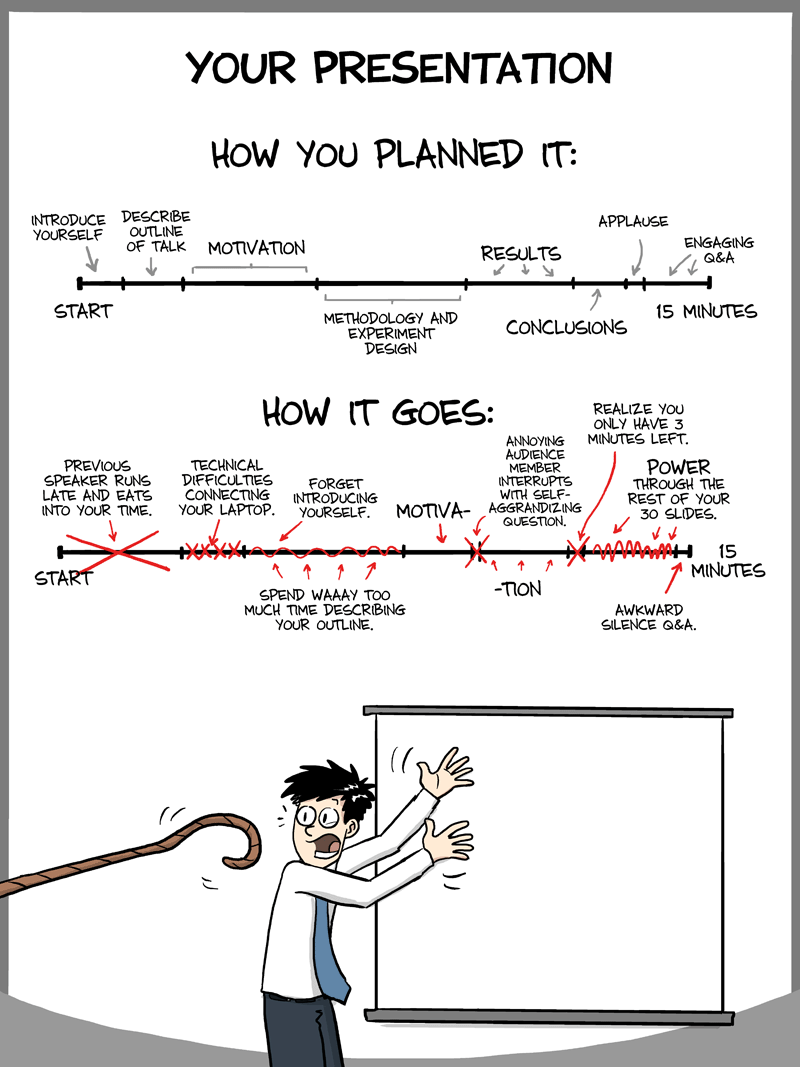At the recent INFORMS (Institute for Operations Research and the Management Sciences) conference, I was a judge for one of the days for the poster session (or “Interactive Session”, as INFORMS prefers). As a judge, I first spent five minutes each with three participants. After making recommendations for finalists, the entire judging panel (a dozen or so people) then spent five minutes each with five finalists. We then crowned a third place, second place, and first place winner.
A week after the conference, I can describe in detail what each of those eight researchers (all students, I believe) did. I can give you the strengths and weaknesses of the research of the eight posters, and can use them as examples of work that goes on in our field. If I were hiring, I know at least two or three people I would love to have at the Tepper School. All this with forty minutes of engagement.
Contrast this with the presentations I saw in the “regular” sessions. I attended four sessions (not including my own, nor tutorials or plenaries). Each was ninety minutes long, so that makes six hours. During that time, I saw about 14 presentations. I remember about half of them. I didn’t really get a chance to ask questions, and I tuned out of some once I really understood what they were going to inflict on me. Again, there were at least two or three people I would love to have at the Tepper School, some of whom are already here (and I didn’t tune out of those!), but, overall, the talks I saw did not turn out to be as memorable as the interactive presentations.
Worse, consider the plight of a student I know. He was to give a talk in a “regular” session. There were two people in the room other than the speakers. Two speakers did not show. The other talks were on nothing at all similar to what the student had done, so everyone in the room spent his talk reading the bulletin wondering where they would rather be. No questions, no interaction.
Or another student who ended up with just ten minutes to present because the session chair allowed the other, more senior, people to run over. Or another student I saw who had a delightful talk curtailed by technological and other issues. A PhD comic seems particularly appropriate here:

So, I guess my question is: “Why don’t we have more poster interactive sessions?” Or even all poster sessions, except for the tutorials and plenary presentations. It is good for the presenter and good for the participants!
Note added: This also reminds me of having a five minute video as an adjunct to a paper, as this one sent to me by Les Servi. It is a great way to determine if a paper is worth further study.
